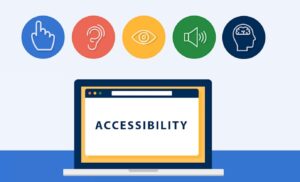In today’s complex business landscape, enterprises face various risks, compliance requirements, and governance challenges. Many organizations are turning to GRC software as a comprehensive solution to navigate these complexities effectively. GRC, which stands for Governance, Risk, and Compliance, encompasses the critical processes businesses must manage to maintain operational integrity and meet regulatory standards.
The Growing Importance of GRC Software
As enterprises expand and regulatory environments become more intricate, more than manual processes for managing governance, risk, and compliance are required. GRC software offers a centralized platform that streamlines these crucial functions, providing numerous benefits to organizations of all sizes.
Enhanced Risk Management
GRC software offers a key benefit in enhancing risk management procedures. By centralizing risk data from all corners of the organization, these tools empower businesses to better recognize, evaluate, and address potential threats. This comprehensive risk management strategy equips enterprises to proactively tackle evolving challenges and make well-informed choices.
Streamlined Compliance
Compliance with industry regulations and standards is a critical concern for many businesses. GRC software simplifies compliance management by automating many associated tasks, such as policy creation, implementation, and monitoring. This automation reduces the likelihood of human error and ensures that organizations can adapt quickly to changing regulatory requirements.
Improved Decision-Making
By offering a holistic perspective of an organization’s risk and compliance environment, GRC software enables leaders to make well-informed decisions. The real-time data and analytical functionalities help executives recognize patterns, foresee potential challenges, and allocate resources with greater precision.
Overcoming Implementation Challenges
While the benefits of GRC software are clear, some enterprises may hesitate to adopt these solutions due to perceived implementation challenges. However, with proper planning and support, these obstacles can be overcome.
Choosing the right GRC software solution is crucial for successful implementation. Organizations must meticulously assess their requirements and choose a platform that resonates with their objectives and current workflows.
The Future of GRC Software
As technology continues to evolve, so does the GRC software landscape. Emerging trends like artificial intelligence and machine learning are being integrated into these platforms, offering more superb insights and automation capabilities.
Conclusion
In an era of increasing regulatory scrutiny and complex risk environments, enterprises can no longer afford to rely on outdated methods for managing governance, risk, and compliance. By prioritizing the adoption of GRC software, organizations can streamline their processes, reduce risks, and gain a competitive edge in their respective industries. As the business world evolves, those who embrace comprehensive GRC solutions will be better positioned to navigate challenges and capitalize on opportunities. For a detailed overview of GRC software and how to effectively use it, see what GRC software is and how to use it. The time for enterprises to prioritize GRC software adoption is now.




